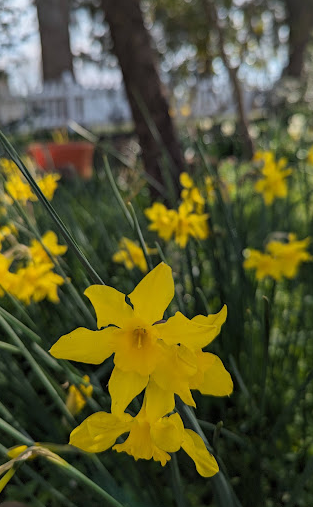Sundrops and 'Orange Sherbert'
- Clifford Brock
- May 16, 2023
- 2 min read
Updated: May 17, 2023
I'm always looking for uncommon but easy-to-grow flowers. Plants that can, for the most part, take care of themselves. And it's even better if they multiply or are easily propagated via cuttings. When I find plants that thrive for me, I really want to spread them around to my gardening friends.
We are entering a kind of lull in floral color between the spring explosion and summer. Most of our early wildflowers and perennials have long faded, but we aren't quite at the point where summer flowers, like Echinacea, daylilies, and Rudbeckias are in full swing. Though this year everything is a bit out-of-sync because of our erratic winter.

But two incredible bloomers are lighting up the late May stage. Oenothera fruticosa 'Fireworks' is a cultivar of our native sundrops. It loves full sun and grows best in rich moist soil. Like most primroses, sundrops open late in the evening and into the morning but close during the heat of the day. This is fine with me because I'm rarely out gardening or photographing flowers during the hottest hours.
Sundrops are incredibly easy to replicate and share. In fact, I got mine as a little tiny rooted piece from a friend around 2 years ago. From that humble stem, I've been able to divide, share and spread around my yard and to numerous gardening friends. This is a plant that may become slightly weedy, though it should be easy enough to contain.

Lychnis coronata 'Orange Sherbet' is also a delight this time of year. While it isn't as easy nor as quick to multiply as sundrops, it nevertheless is worth growing and rooting. Last year I was able to successfully root some stems in early June and those now are bulking up nicely. Rooting this is slow, but I've had success with the zip-lock bag method taught to me by Mike Creel. Just cut a stem around 5 inches. Cut off the lower leaves and any floral buds. Then stick the cuttings in a small container, thoroughly water, and place the pot in a large clear bag. Zip it up and set it in the shade (like under a shrub). It may or may not root, but check it in about 3 weeks. I always lightly tug the stem to feel if there is any resistance. It may take longer, but usually, something will happen in about a month, if it is going to happen...




Comments